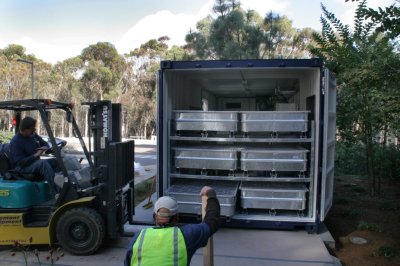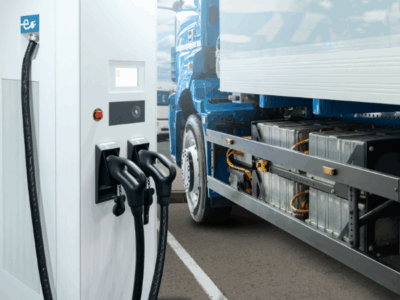Cleaning The Grid With “Second Life” Electric Vehicle Batteries
Register now for a webinar on the forthcoming UCLA/UC Berkeley Law report, next Friday from 10-11am
As California faces an increasing need for more energy storage to integrate variable renewables and provide other grid services, used electric vehicle batteries could be a critical – and inexpensive – part of the solution. Sales of electric vehicles in the United States are heading toward a quarter million, with 100,000 of those purchases in California. The thousands of batteries that will be coming out of the vehicles in the coming years will still retain significant capacity, although not enough to provide a sufficient electric driving range. These used, less expensive batteries can be stacked and repurposed by utilities and building owners to clean the grid and reduce costs. Plus, electric vehicle customers could see lower upfront prices if automakers factor in the long-term resale value of the batteries in the sale price.

UCLA and UC Berkeley Schools of Law, with the support of Bank of America, will be releasing a new report next Wednesday on policies needed to help boost this market. The report resulted from a one-day convening at UCLA Law that included major automakers, renewable companies, battery experts, and public officials.
On Friday, September 19th, from 10 to 11am, UC Berkeley Law will host a live webinar, featuring representatives of the Governor’s Office and the California Public Utilities Commission to discuss the report findings. You can register here (space is limited). I hope you can join.
UPDATE: The webinar is now on-line and can be watched here:
[youtube http://www.youtube.com/watch?v=K3Zq8VlXYXY]
Reader Comments
5 Replies to “Cleaning The Grid With “Second Life” Electric Vehicle Batteries”
Comments are closed.






Ethan said:
“….These used, less expensive batteries can be stacked and repurposed by utilities and building owners to clean the grid and reduce costs….”
Dear Ethan,
How do used batteries “clean” the grid? Can used batteries polish the power lines and clean transformers, poles and relay switches? How does one go about using old batteries to clean anything? Please explain you reasoning.
“Cleaning” the grid refers to decarbonizing it, as well as reducing other harmful co-pollutants. These batteries can store surplus renewable energy and offset peak power from dirty power plants, among other grid services.
Ethan,
Peak power is not normally provided by dirty power plants. Coal plants typically provide “base-load” electricity and run continuously. Peak load is provided by clean-burning gas turbine generators that can be quickly started-up to augment the base-load plants during periods when there is heavy demand for electricity.
It seems doubtful that used batteries would be able to provide a technically feasible and cost-effective storage technology that could adequately supply peak power demand on a hot summer day, when compared to a conventional gas turbine generator. Used car batteries will probably not be “cleaning” the grid anytime soon. This might be just another climate scam like cap n’ trade.
California does not use coal power (with the exception of Los Angeles, which is phasing out its reliance on two out-of-state plants). So natural gas is our version of “dirty.” These peaker plants are expensive to operate and pollute. You write that they are “clean-burning” — but that seems to defy logic. Burning something by definition releases pollutants. You may be correct that lithium ion batteries from EVs alone may not offset all peak power, and that is why California is encouraging a range of energy storage options for needs like these. The technologies involved certainly include batteries (a wide range, such as flow batteries) but there are other technologies in the mix as well, such as pumped hydro, compressed air, and various thermal storage options. I believe repurposed electric vehicle batteries will be an important part of the solution.
Ethan said.
“…. Burning something by definition releases pollutants….”
Clean burning natural gas produces water vapor and carbon dioxide. The great big lie proffered by the EPA and the California Environmental Bar is that carbon dioxide is in the same category of toxic pollutants as sulfur, benzene and chlorine gas.
Carbon dioxide is a fake pollutant and California will continue to significantly increase its carbon emissions regardless of all its paltry little nefarious schemes to do otherwise. We will vote on whether carbon dioxide is a so-called “pollutant.” Hurry November, teach them the truth.